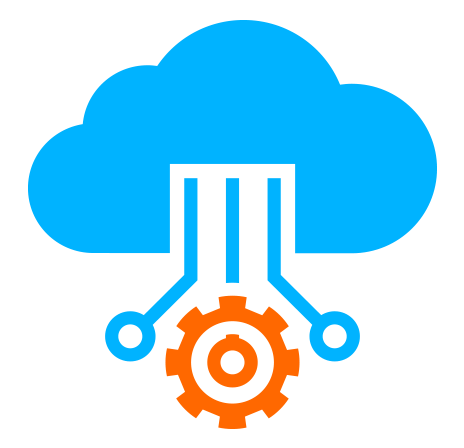 Server
Colocation
Server
Colocation
 CDN
Network
CDN
Network
 Linux Cloud
Hosting
Linux Cloud
Hosting
 VMware Public
Cloud
VMware Public
Cloud
 Multi-Cloud
Hosting
Multi-Cloud
Hosting
 Cloud
Server Hosting
Cloud
Server Hosting
 Kubernetes
Kubernetes
 API Gateway
API Gateway

It’s no secret that artificial intelligence is reshaping industries, from healthcare diagnostics to autonomous driving and language models. Under the hood of this revolution? High-performance GPUs. According to NVIDIA’s Hopper architecture rollout in 2022, GPUs like the H100 have become the gold standard for training large-scale AI models.
CFOs and CTOs are increasingly asking, “What’s the H100 cost—and how does it compare to older GPUs like the A100 or newer ones like the H200?” This is especially true as businesses balance bare-metal server investments against cloud GPU hosting to meet enterprise-grade performance needs.
In this blog, we’ll dive into:
The real-world H100 cost
Comparisons with A100 and H200 GPUs
Cloud hosting vs on-prem TCO analyses
What drives the value for performance
And cost-efficient strategies for your AI infrastructure
The NVIDIA H100 GPU, part of the Hopper series, delivers cutting-edge AI performance with H100 80 GB L2 cache, Tensor Core FP8 support, and HBM3 memory with 3 TB/s bandwidth
Direct purchase price: ~$25,000 per card (some reports show prices pushed to $30k–$40k due to demand)
Resale listings: Often exceed $40,000 on secondary markets
Cloud providers rent out H100s with significant markup but offer flexibility:
Hourly rates range from ~$1.99 (RunPod) to ~$6.98 (Azure) per GPU
Example: Azure’s NC H100 v5 VM is $6.98/hr — about ₹575/hour
The A100, based on Ampere architecture, has been the backbone of AI since 2020. With each new generation, it has improved in Tensor Core performance and memory speed.
A100 MSRP: ~$10,000–$12,000
Cloud rent: ~$0.78/hr on platforms like Thunder Compute
H100 offers roughly 2× the FP performance of A100, and can train LLMs in half the time
Even though H100 costs ~2× as much per hour, it can reduce total training time — leveling the total spend
A practical example from MosaicML shows:
|
GPU |
Time (hrs) |
Cost @ Ori |
|
8× H100 |
4,100 |
$~13,000 |
|
8× A100 |
11,462 |
$~20,600 |
This illustrates greater cost-efficiency for H100 in intensive workloads
The newly released H200, based on Grace Hopper architecture, offers enhanced memory bandwidth and efficiency:
Price estimates are 30–50% higher than H100 — around $30k–$40k
Power-to-performance improvements could yield better TCO in specialized environments
For example, if an H100 costs $25k and H200 is 40% more, you’re looking at a ticket price near $35,000 per chip.
But unless your workload fully utilizes its added capabilities, it might be economically sound to stick with H100 — especially since independent comparisons suggest H100 remains the most balanced choice for most use cases .
Suppose you buy 8 H100s ($200k) and install them in a DGX H100 rack system (~$400k total):
CapEx: ~$400,000
Annual colocation, power, cooling: ~$40,000/year (for 10 kW draw)
Depreciation: spread over useful life (3–5 years)
This breaks down to ~$88,000/year, excluding staffing and maintenance — significantly cheaper per year than cloud rentals if you're using GPUs extensively.
If you rent H100s on-demand:
At $6.98/hr from Azure: ~₹575/hr
24/7 use: $6.98 × 24 × 365 ≈ $61,200/year/GPU
You break even between cloud and purchase in less than a year if you're running GPUs full-time — echoing similar findings from TRG Data Centers
Thus hybrid setups — baseline on-prem plus occasional cloudburst — can be optimal.
H100 vs A100: Twice the price, but often half the training time = potential cost neutrality or savings
A100 remains viable: Great for lighter or mixed workloads where TCO matters
H200 is premium: Best for workloads that exploit its extra memory and bandwidth
Buy vs Rent: Buying and colocating H100s becomes cheaper than continuous cloud rent after ~8–12 months
Hybrid is best: On-prem for baseline jobs, cloud for spikes avoids overinvestment
In the AI arms race, GPU choice directly impacts both speed and budget. The H100 stands as a top-tier option — outperforming the A100 in speed and efficiency, and offering a more accessible entry point than the upcoming H200.
Breakdown:
H100 cost: $25k–$30k per unit; cloud rent $2–7/hr
A100: $10k–$12k; cloud ~$0.78/hr
H200: ~$30k–$40k; high-end use cases only
If your applications demand fast, efficient AI training and you can commit to high utilization, investing in H100s or hybrid setups makes financial sense. For smaller or bursty workloads, renting on GPU cloud hosting offers flexibility.
Whichever path you choose, calculating total cost — acquisition, power, depreciation, and scale — ensures you invest smartly in infrastructure that aligns with both performance goals and budget realities.

Let’s talk about the future, and make it happen!
By continuing to use and navigate this website, you are agreeing to the use of cookies.
Find out more


